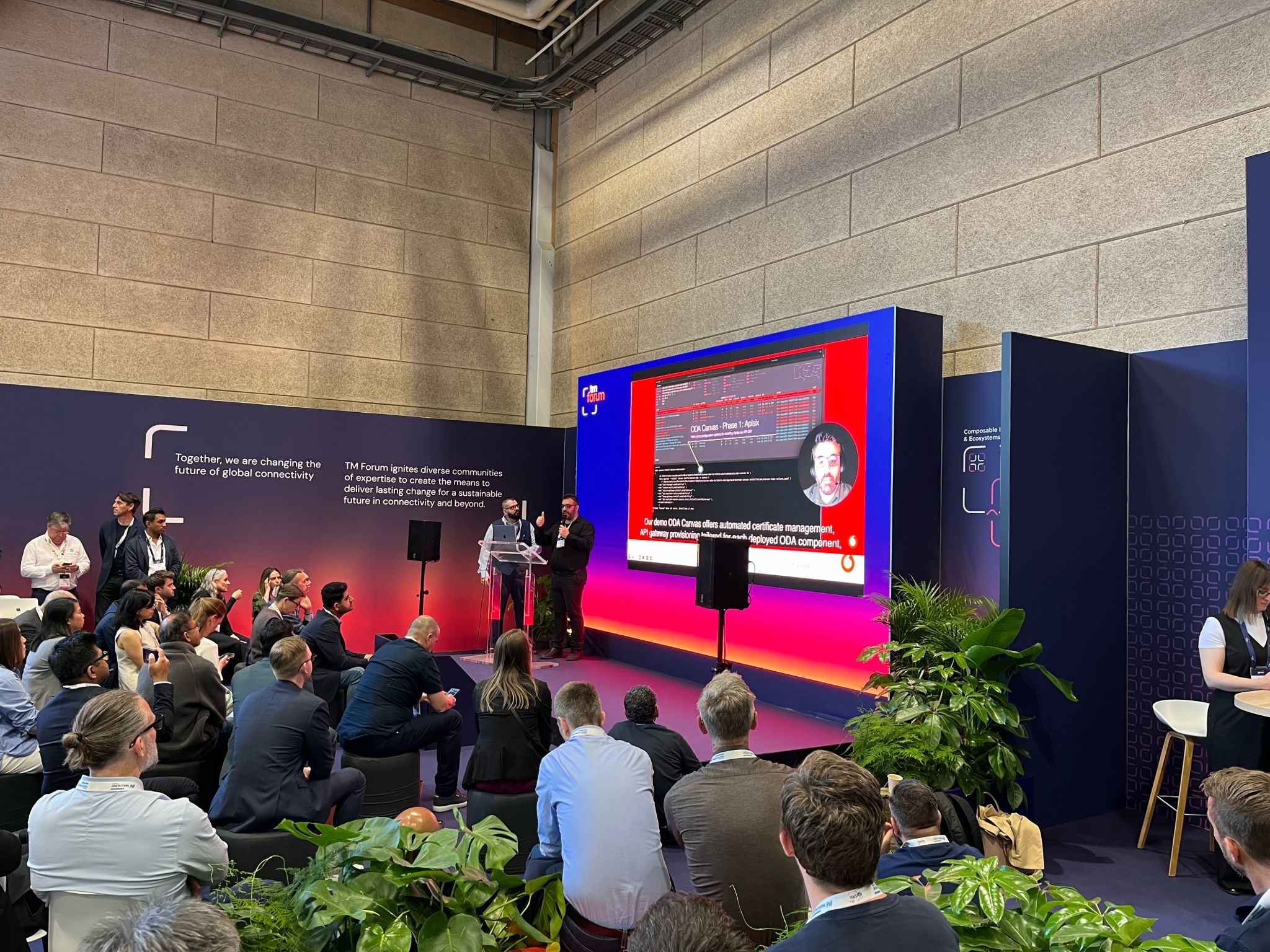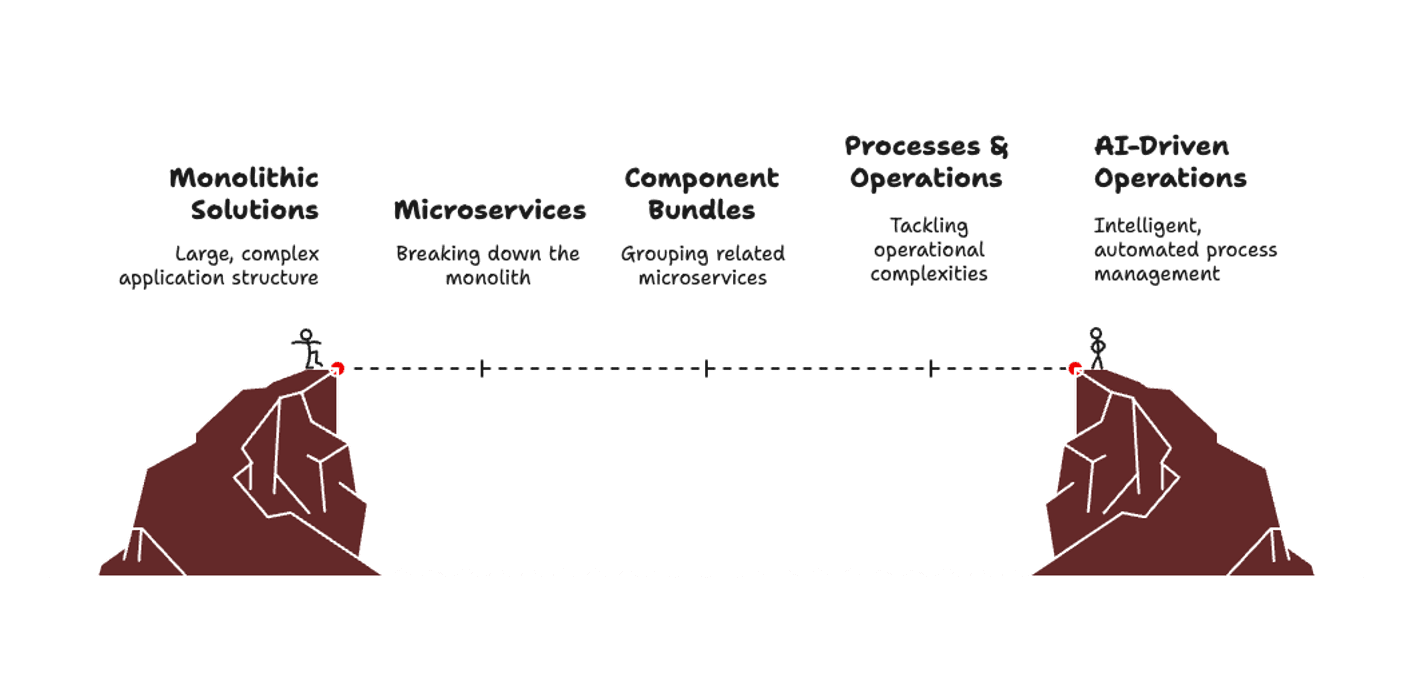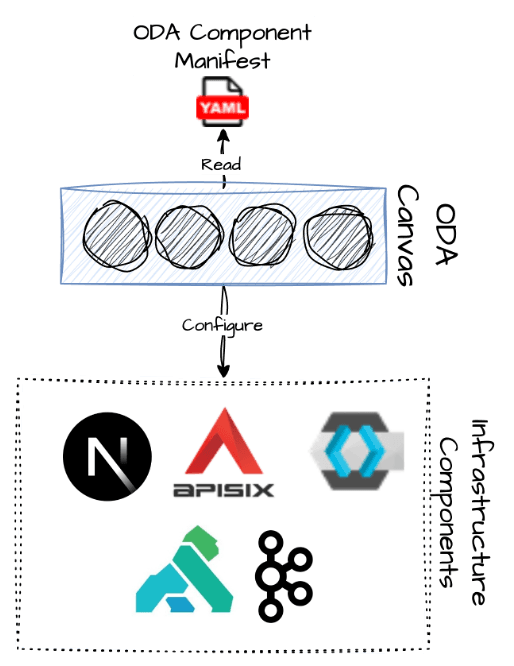Vodafone @ DTW 2025: Composable IT in Action
Introduction: From Vision to Action
At TM Forum DTW Ignite 2025 in Copenhagen—one of the most significant global events for the telecommunications industry where leading operators, vendors, and innovators gather to shape the future of digital transformation— my colleague Nikos Nikolakakis and I had the privilege of sharing Vodafone Greece's journey towards Composable IT, and show a glimpse of the future.
It’s a journey that reflects not just technology evolution, but how we as engineers, architects, and operators rethink what’s possible.

From Monoliths to Composable IT
Our story started with large, monolithic systems—rigid, difficult to change, and costly to maintain. Over time, we broke these monoliths down into microservices, hoping to gain agility. But we soon realized that microservices alone didn’t solve everything. We needed to go further: grouping services into bundles and components, and eventually adopting a Composable IT mindset. This evolution was driven by the need for faster innovation, smarter operations, and resilience at scale.
Composable IT isn’t optional for us anymore; it’s the foundation of our agility and innovation. We couldn’t afford wholesale replacements of legacy systems—they’re too risky and expensive. Instead, we evolved through smart automation, standardization, and embedding AI into the fabric of our operations.

Why Composable IT is Necessary in Today's World
Monolithic architectures produce tightly coupled, non-portable solutions that limit flexibility, making it difficult for businesses to adapt and evolve. By shifting towards a model where the business is composed of modular components, we unlock the opportunity to automate processes and accelerate meaningful change.
This approach allows us to modernize our IT landscape without risking major disruption or having to rebuild our systems from the ground up—a path that would otherwise be too risky and costly. Ultimately, Composable IT gives us the tools to innovate faster, build greater resilience into our systems, and adapt to the demands of an AI-first, cloud-native world.
ODA Canvas: How It Works and What Sets It Apart
The ODA Canvas is at the heart of this transformation. It’s not just an execution environment—it’s the glue that brings together modular components, automates their lifecycle, and ensures they work seamlessly in any environment. Built on Kubernetes Operators, the Canvas reads component metadata to:
- Automatically configure API gateways (e.g. Kong, Apisix)
- Wire up observability and monitoring (Grafana, Prometheus, Datadog)
- Apply security policies and OIDC authentication
- Manage secrets, certificates, and backups
- Handle cross-component connections without manual toil
In our case, we are using the Canvas as a middleware between our kubernetes implementations and the cloud infrastructure. It automates post-release processes, like our API Gateway configuration, and additional environment setups that could not be done during our initial infrastructure setup.

ODA Canvas follows core principles:
- Open source and cloud-native by design, extensible and community-driven
- Everything as code: infrastructure, policies, operations
- Standardization as software: machine-readable definitions embedded into automation
- Self-healing and drift correction: maintaining consistency over time
- Built-in guardrails: policy-as-code, linting, static validation, progressive rollouts
- Portability and reusability: develop once, deploy anywhere
The Canvas is what allows Vodafone to move from vision to action, with CELL already delivering this in production. CELL is Vodafone’s modern IT infrastructure platform, designed to combine the power of automation, security, and cloud-native operations into a single, consistent environment. What differentiates CELL from our other clusters is that it is purpose-built to embed the ODA Canvas as a first-class citizen: every deployment, every configuration, and every operation benefits from the automation and standardization provided by the Canvas. You can learn more about CELL in depth in our article posted a while ago.
More importantly, we are using the Canvas to put our processes into actionable software, turning what were once static documents and manual procedures into living, automated systems that enforce policies, execute post-release actions, and ensure consistency by design. This is crucial in today’s software world, where agility, repeatability, and built-in compliance are not just nice-to-haves, but essential for operating at the speed and scale modern businesses demand.
This is especially important as systems become more complex, software teams work increasingly remotely, and processes grow larger and harder to manage manually.
API Gateway Agility: Making the Impossible Easy
Changing an API gateway used to take weeks. We showed at DTW how it now takes just seconds—3 seconds, to be precise. Thanks to the Canvas, switching gateways, updating authentication models, or adding notification channels is no longer a multi-week project. It’s an automated, safe, repeatable task that gives us massive flexibility.
Looking Ahead: AI as a Native Capability
The ODA Canvas also sets the stage for the future. We’re exposing AI and GenAI interfaces using the same composable, automated foundation. AI isn’t a bolt-on feature for us—it’s becoming part of how we run and evolve our platforms.
Final Thoughts
The journey from monoliths to Composable IT hasn’t been easy, but the rewards are clear: agility, resilience, and a platform that’s ready for whatever comes next. At DTW Ignite 2025, we didn’t just present what we’ve built—we shared a glimpse of the future of telco IT and how Composable IT, powered by ODA Canvas, can shape what’s coming. I’m proud of what our teams have built, and I look forward to collaborating with the broader community to take it even further.